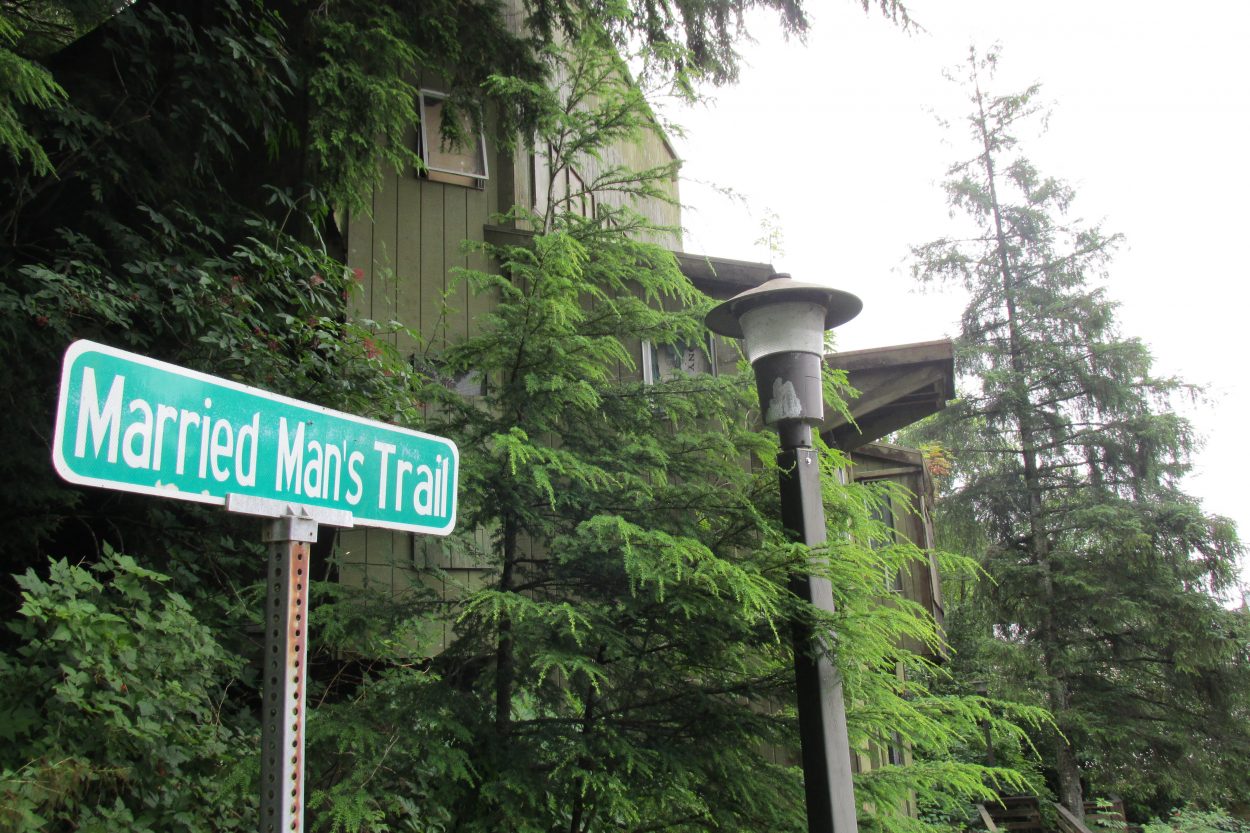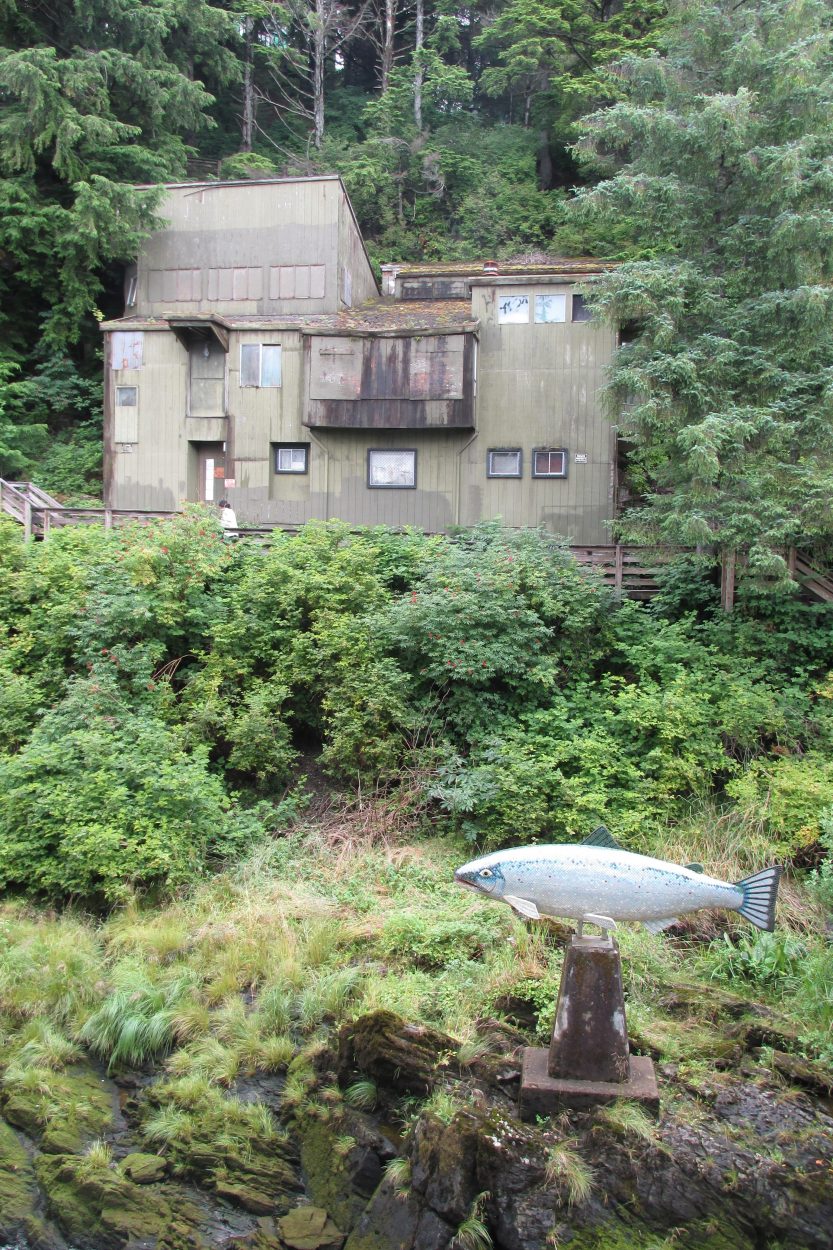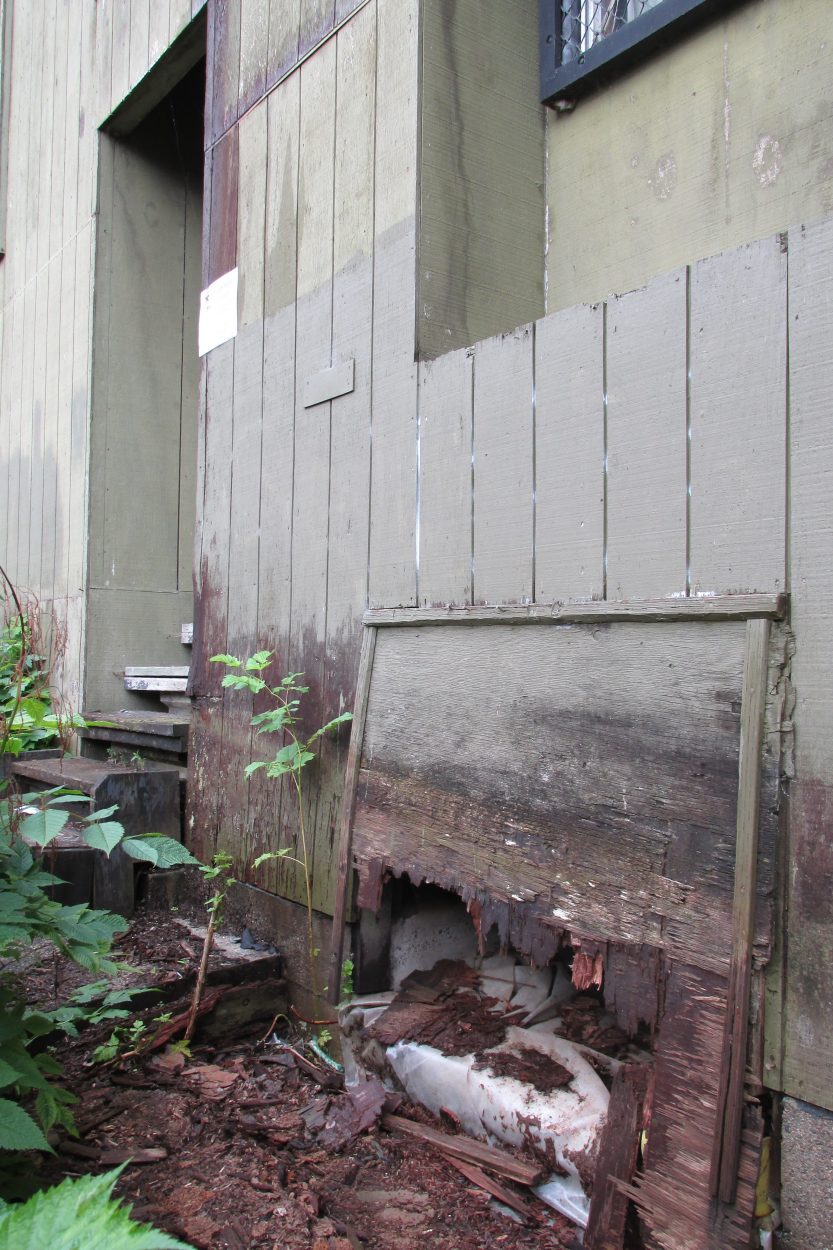Ah, Creek Street: the heart of tourism in Ketchikan. The wooden boardwalk is lined with buildings that all have the same general look about them – old, quaint, reminiscent of the Gold Rush era of the early 20th century. It seems as though each structure has a story.
One building, though, doesn’t seem to align with the kitschy aesthetic of the rest. It sticks out, as they say, like a sore thumb.
And if we’re combining metaphors, it sticks out like a sore, green thumb.
It’s the large, lurching green house that stands at No. 1 Creek Street. Inaccessible from the road or boardwalk, it looks like it’s been cobbled together from parts of different structures – it’s a Frankenstein house.
“The green one is the one that seems to have struck the biggest, kind of, irritated core with the community, because – you’re right – it’s not historic,” said Dave Kiffer.
He used to be executive director of Historic Ketchikan, a local non-profit dedicated to preserving and promoting historic structures in town.
Kiffer told me that people in town have been curious about the status of No. 1 Creek Street for a long time. But, he said, they also ask about No. 2 Creek Street – the red, one-story house sitting on the boardwalk next to SoHo Coho, and art shop.
“When I was the executive director of Historic Ketchikan a decade ago, I would bet that probably a month didn’t go by that I didn’t get a phone call from someone asking about those properties, particularly the green one, usually saying, ‘Why is it still there? Why hasn’t someone torn it down? How do you buy that property?’” Kiffer said.
So who owns these buildings? And what are the answers to those questions? I turned to Matt Elberson.
He’s the building official for the City of Ketchikan.
He said the green house was built in the late ‘60s.
“I don’t believe it was really ever a permitted structure,” he said. “And currently it’s vacant. No one is living in there – legally.”
And the red house? He said it was built in the ‘20s and was lived in at one time, but it’s currently vacant and in pretty bad shape.
“It needs a lot of attention,” he said.
It seems that both properties need a lot of attention. From broken windows to rotting pilings, these buildings have seen better days for sure. And for the City of Ketchikan, this is an issue.
Elberson said the city has posted notices on both buildings to repair the structures.
“The structural problems – they render them unhabitable,” he said. “They’re dangerous buildings.”
“And who specifically are they a danger to?” I asked.
“To anyone who may want to live in them, because there’s a danger of collapse or failure,” he replied.
My next question was: who’s responsible for the upkeep of the structures?
After some digging, I found that both properties are in the name of brothers Charles and Paul Lindsley. They also own 3 Creek Street, which is just an empty lot.
Getting in touch with the Lindsley brothers was pretty difficult. After scouring the internet and asking around town, I managed to get in touch with a guy by the name of Eric Akerhielm. He, apparently, is helping the Lindsley brothers to communicate with the city about their buildings. It’s unclear if one or both of the Lindsleys still lives in Ketchikan, but Akerhielm does.
I reached out to him by phone. When I asked if Charles Lindsley had any comment on the state of his properties, Akerhielm said, quote, “Whatever’s good for your soul, do that.”
Then I ask if Akerhielm himself had any comment. Without missing a beat, he said, quote, “Do more yoga.”
“For you to do more yoga?” Stephen Reeve asked, laughing.
“I’m assuming it’s…for the universe,” I said.
“That’s probably a good idea.”
“I do yoga every day, so, I’m good.”
“Well, maybe you need to do more yoga.”
Reeve is the current executive director of Historic Ketchikan. He thought Lindsley and Akerhielm’s comments were pretty funny.
“Everybody has a different attitude toward their property,” he said. “And this property owner may not have the same sense that I do, and
you do, and others do about the creek and restoring or maintaining property, and that’s really his right to do that.”
So, what now? Kiffer, a City Council member, said the city doesn’t have the money to take care of all the derelict buildings in Ketchikan.
“It would cost the taxpayers a lot of money,” he said. “Because the reality is people always say, ‘Oh, you can take over a property – you can remediate the site, tear down the building, and then sell it for lots of money.’ No. That’s not how it works.”
He said the best-case scenario for the city would be for the Lindsleys to repair or tear down the buildings themselves.
And Reeve said Historic Ketchikan is more than willing to help them repair No. 2 Creek Street, which does, in fact, have some historical value due to its age.
For now, though, the buildings remain, condemned and cordoned off at the end of Creek Street.












